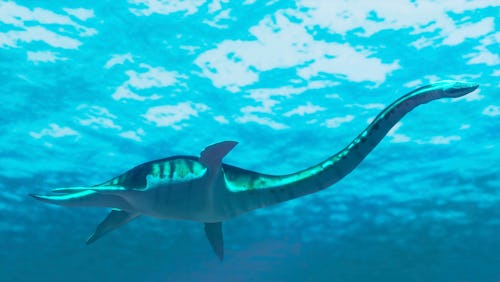A newly discovered fossil hints that the Loch Ness Monster could exist
Look, it’s not necessarily likely, but it is “plausible.”

There are lots of reasons to believe that the Loch Ness Monster isn’t real, beyond the fact that it is apparently just an incredibly unphotogenic cryptid. But now there is at least one bit of evidence that suggests Nessy did occupy the loch outside the Scottish Highlands at one point. According to The Telegraph, scientists at the University of Bath have discovered fossils that lend credence to the possibility of a Loch Ness Monster-like creature calling a freshwater river home.
In the Sahara Desert in Morocco, researchers found fossils of plesiosaurs, a marine reptile from the Early Jurassic era that could grow to be up to 11 feet long and 1,100 pounds. The fossils included bones and teeth from what is believed to be from a smaller adult plesiosaur and a baby.
What made the discovery particularly interesting is where the bones were found. While it is a desert now, 100 million years ago when the plesiosaurs would have occupied it, it was a freshwater river system. The ancient teeth showed the same patterns of wear and tear found in the fossils of Spinosaurus, another dinosaur that swam in freshwater systems. The bones are the first indication that plesiosaurs may have lived in freshwater, too, calling home the same water as creatures like turtles and crocodiles.
That revelation is key to the potential existence of the Loch Ness Monster, which has long been thought to occupy Loch Ness, a freshwater inlet that runs off from the River Ness. The cryptid, which is thought to be spotted occasionally in the Scottish lake, closely resembles the plesiosaur, at least per descriptions from its supposed witnesses. The new detail that the prehistoric reptiles may have lived in freshwater rivers means that ol’ Nessy, the modern-day plesiosaur, could conceivably exist in the lake that it is believed to call home.
While the University of Bath noted that the newest addition to the fossil record suggest that the Loch Ness Monster is “on one level, plausible,” the researchers also pointed out that the plesiosaurs died out with the rest of the dinosaurs about 66 million years ago. That remains the biggest hurdle to proving the existence of Nessy — the fact that its species has been dead for longer than humans have ever existed. But, you know, one step at a time.